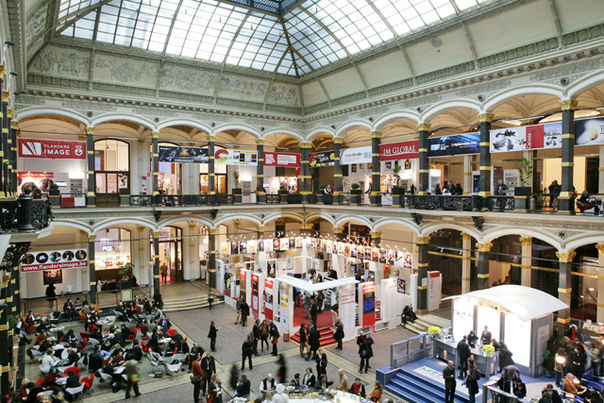When Cool is Not So Hot
Latvian youth is the subject of Juris Poskus' KOLKA COOL, on display at the European Film Market.

The busy venue of the European Film Market
Cool is not so cool when it comes to the young Epicureans of the Latvian suburb of Kolka. Detached from the influence of modern technology and the urgency of city life, KOLKA COOL’s youngsters are too laid back for their own good. But as the film unravels, it shows that they’re obviously cool with that.
Shot in black and white, Juris Poskus’ movie (shown as part of the European Film Market) deals with a syndrome that extends beyond its Latvian locale. The film opens with jobless, penniless Andzha (Artuss Kaimins) proposing marriage to his girlfriend, Simona (Iveta Pole). “Will you die for me?”, she asks in response. Like many other questions posed in KOLKA COOL, this question is never really answered. But this is not a love story. Despite this potentially melodramatic opening, the film tends more towards a coming-of-age adventure; only the young, hip and cool characters never come of age. Apart from Andzha’s brother, Guido (Andris Keiss), none of the main characters have actually ever been on an adventure. Guido himself returns home after touring the world by sea, becomes one of the boys and shows no signs of ever leaving Kolka. They perhaps all want everything, yet give nothing.
To his credit, Poskus’ depiction of the characters’ milieu is mostly believable, and reminiscent of similar young people around the world: no education, no jobs, much drinking, partying, and rivalry between the local youth and their peers from neighbouring towns. Though the narrative takes a circuitous route, Poskus tilts the audience towards KOLKA COOL’s likely outcome. The characters’ acting and gestures tell the story more expressively than the dialogue. From them, it’s easy to conclude that the answer to Simona’s first question would most likely be that Andzha, like the rest of the film’s “cool” cast, is not willing to die for anyone.
Unfortunately, KOLKA COOL tries too hard to be plausible and ends up over-eulogising the mundane: too much time is spent showing the likely “natural reactions” that could occur in real life. Endless minutes committed to the lead couple playing around on the beach come across as excessive. Conversations that are peripheral to what plot there is in the film also derail the viewer’s train of thought. The director dwells so much on the characters’ lack of self-actualisation that the film itself ends up feeling somewhat unrealised.


301 Moved Permanently